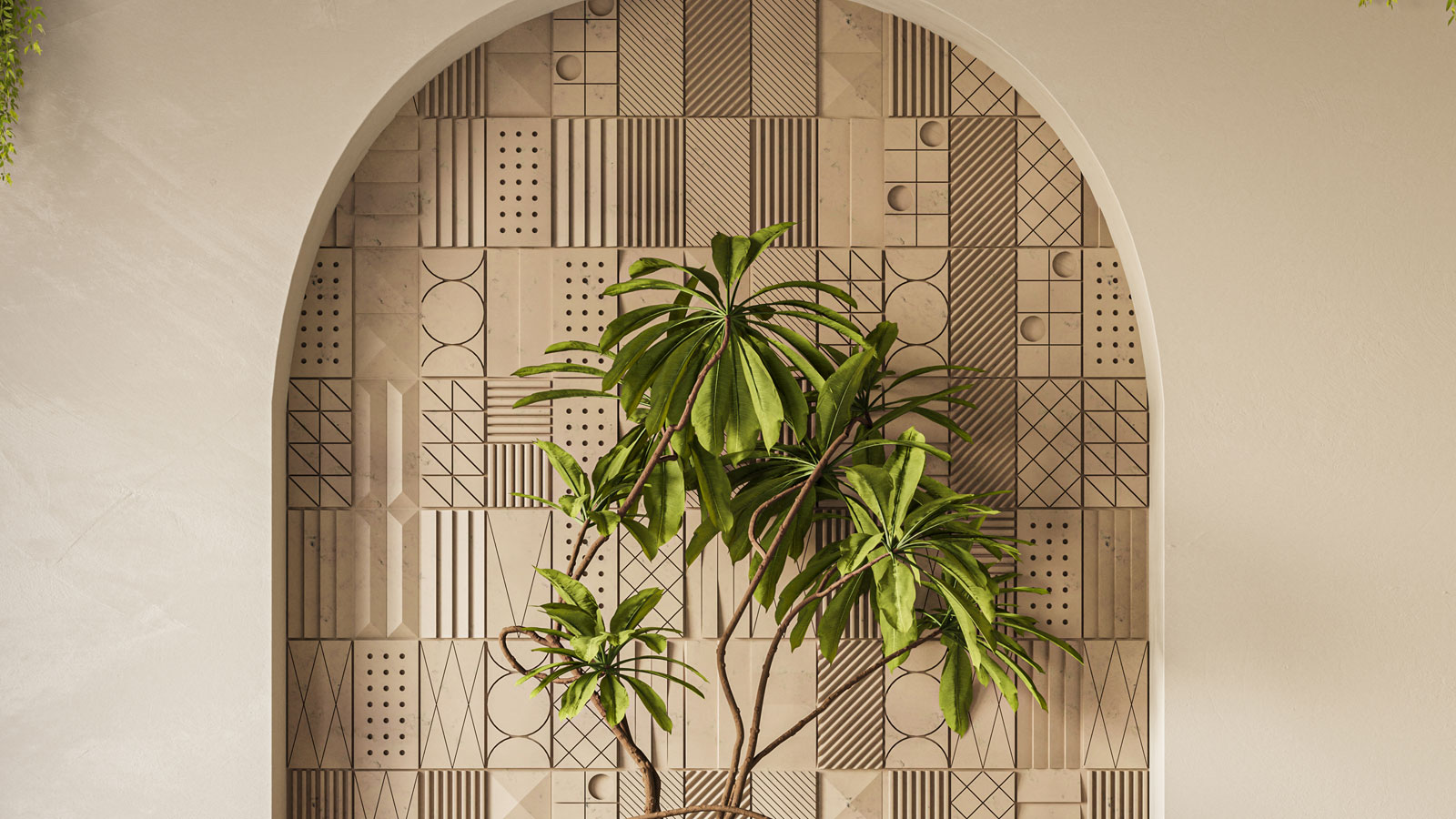Bathroom design: Expert advice on getting it right
If you want your new space to work well, good bathroom design is essential. From bathroom layout to suggestions for sanitaryware, our guide has you covered
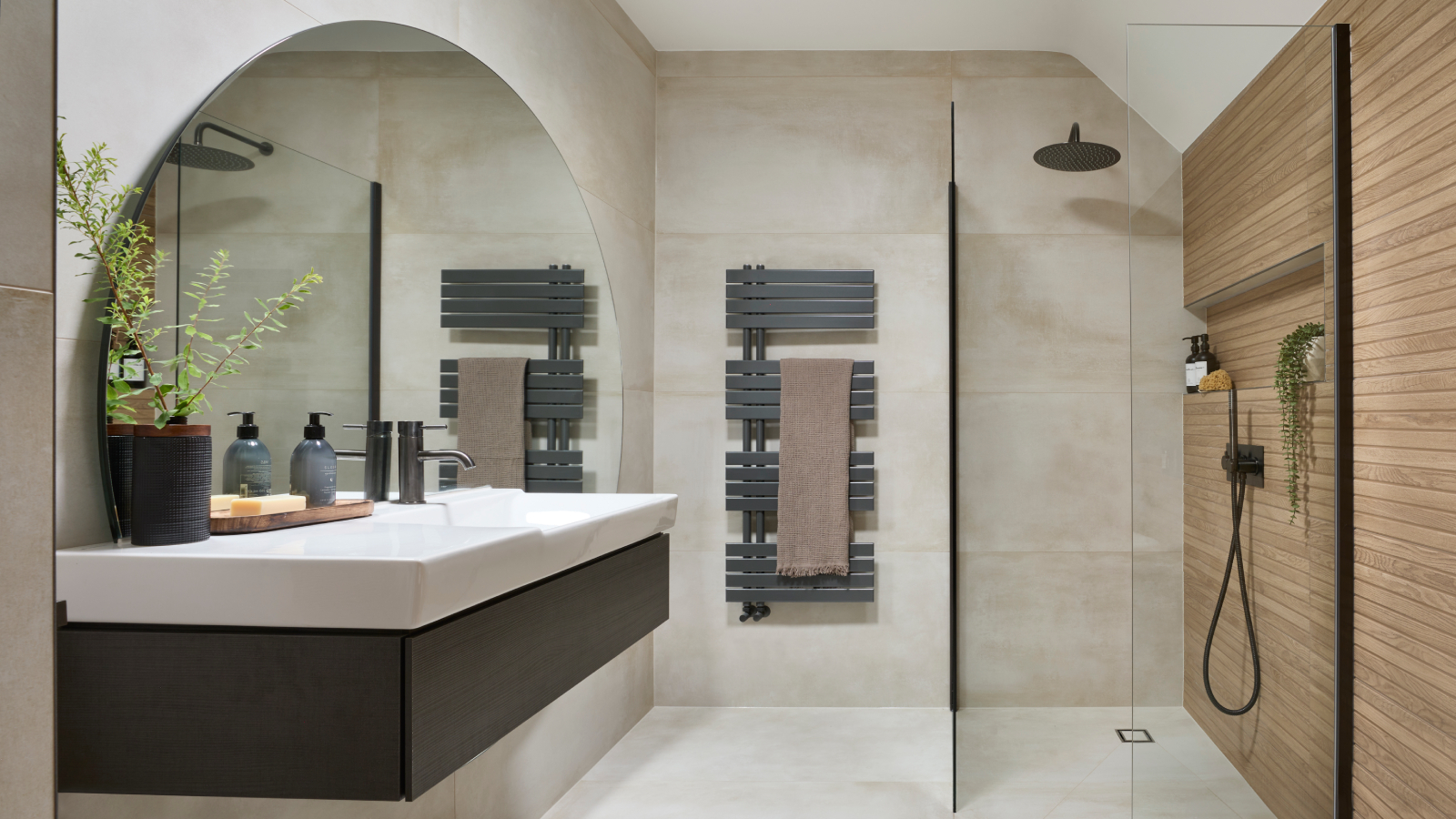
Bathroom design is about more than just figuring out if you would prefer a shower or bath. Get it right and you'll have a sanctuary like space you can retreat to. Fail to organise the fundamental elements well and you could end up with a stark and sterile room you can't bear to bathe in.
But when there's lots of decisions to make, from layout to lighting, choosing taps and tiles and wondering which colour you would prefer, how do you get your bathroom design right?
With the help of Barry Cutchie, Design Director at BC Designs, we've rounded up all the tips and ideas you can take on board to help make your bathroom design feel more manageable.
How to get started with your bathroom design
When it comes bathroom design, don't just think about how you use a bathroom now suggests Barrie Cutchie, "instead, think about how you’d like to use it in the future and use that as a starting point."
Whether you're planning a design for a self-build or renovating an existing space, there are key considerations to take into account. Who will use the space should be top of your list as ensuite bathroom ideas will be very different to family bathroom design.
Create a Pinterest board and decide on your key objectives. Are you looking for practicality or a more luxurious feel? Create a brief for your space, even if you're not using a bathroom design professional, and make sure that your design meets this brief.

Barrie Cutchie founded British bathroom brand, BC Designs in 1999. An award-winning designer who has been at the forefront of bathroom design for over 30 years makes him an expert on getting your bathroom design right.
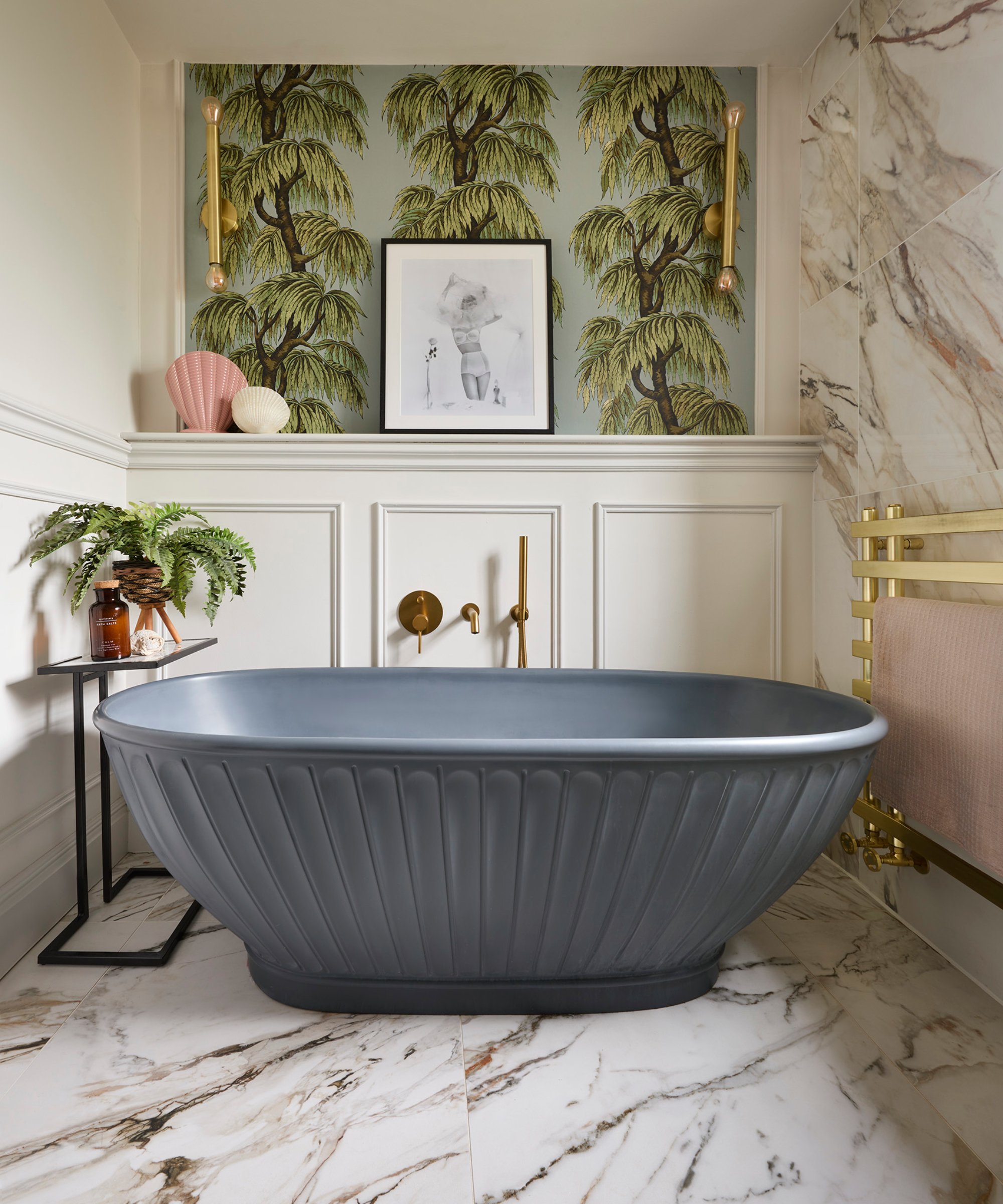
Designing your bathroom layout
“One of the most important things to consider in a bathroom is the layout, says Barrie. Getting it right from the start will mean that you have a bathroom that works for the whole family.
"Even if you plan on hiring a designer, you can start by checking the measurements of your bathroom and making a scale plan. Make sure you include elements that will affect your design, such as window positions and heights, external walls – and therefore drainage – and door openings.
Using a few sheets of graph paper or one of our favourite home design apps, play around, drawing out your bathroom layouts to scale, marking on any windows, doors, alcoves, sloping ceilings or bulkheads
"Then, create the main elements – a bath, shower cubicle, toilet, basic storage. Put them in all to scale," he says, "so that you can better see what works where. While the room size will dictate what is feasible, door and window positions will also impact what can be achieved."
Check your soil pipe location
One of of the main influences on your layout will be the current or proposed position of your soil pipe as this will dictate where your toilet needs to sit.
"Protruding and visible pipes can really spoil the finished design of your bathroom so careful planning of pipework including the soil pipe, is essential," says Barrie.
"Depending on the layout of the property and where the existing soil pipes are, this can be an easy or challenging job. Fortunately, modern flexible pipes, different types of toilet and macerators provide plumbers with more options so there is nearly always a solution."
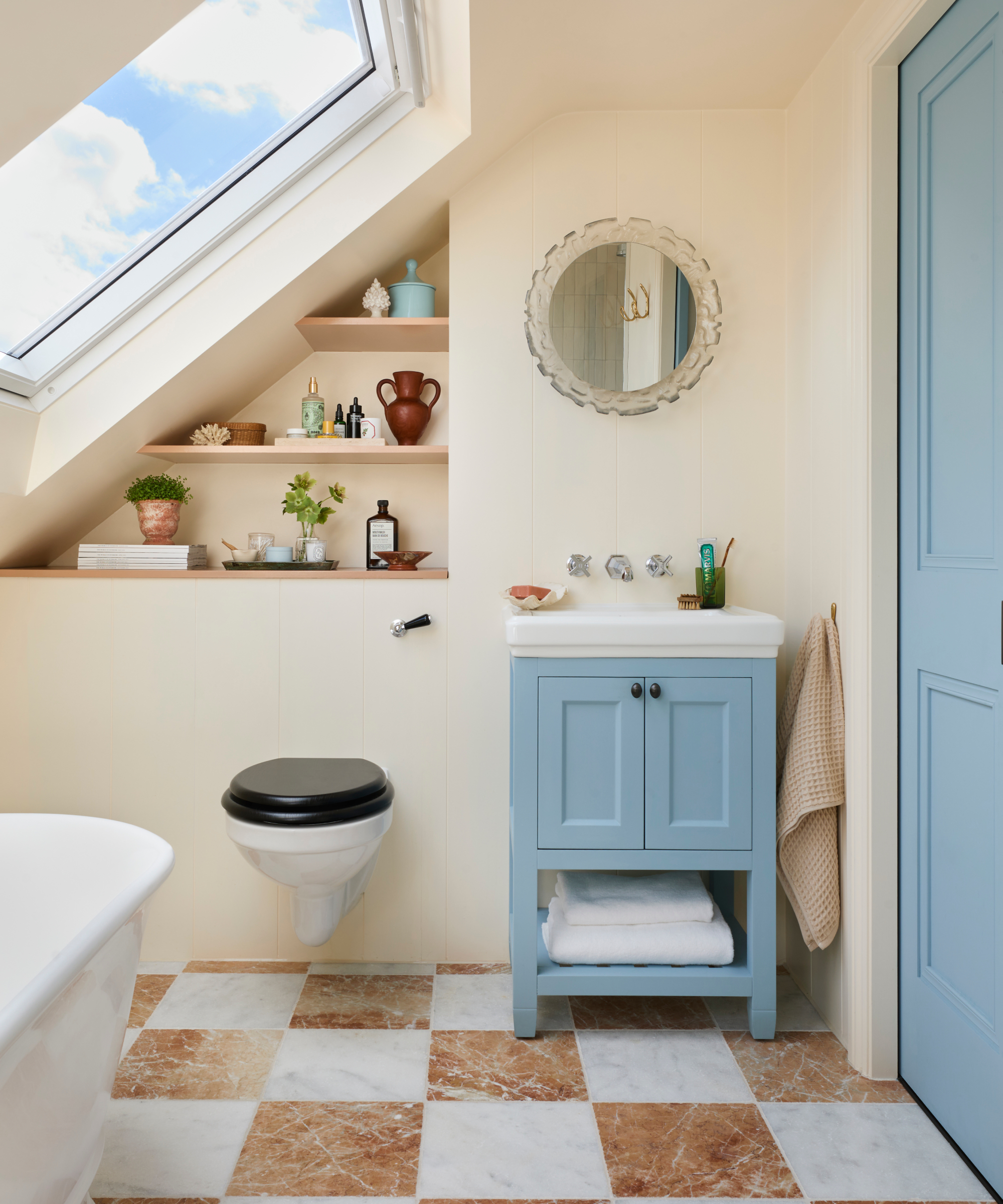
Recommended sanitaryware clearance spaces
“For a separate shower and bath, plus toilet and basin, you need a bathroom of at least 1.7m x 3m," says Barrie. "It might be that you have to compromise on a particular feature, but this doesn't mean dismissing it entirely," he adds.
"If you are set on a bath for example, it could be that you are able to maximise space by positioning it under a window or sloping roof, as not many other items work in these spaces."
- Bath: Aim for a bath height of between 500mm and 600mm. Allow for a minimum of 530mm side clearance.
- Basin: A height of between 760mm and 1,190mm tends to be comfortable for most adults. A clearance of at least 510mm is required to the front - more if possible. According to Victoria Plum, the distance left to right (the span) should be at least 760mm.
- Shower: The minimum comfortable size for a shower enclosure is 760mm x 760mm. A clearance of at least 610mm is also required.
- Toilet: For close-coupled models, an overall toilet height of 595mm - 800mm suits most adults. The seat height should be 390mm - 460mm. The space around the toilet should be at least 760mm, with at least 510mm in front.
Choosing your sanitaryware
Shower enclosure options
Good bathroom layout planning is essential if your shower enclosure is to be a pleasure to use.
Bear in mind that shower enclosures with doors that swing open will need enough space around them for the door to open and to allow you in and out. Enclosures with fixed glazed panels work well in small bathrooms - as do sliding shower doors.
If you're keen to create a wet room idea into your bathroom design, remember that in an existing property, this may depend on there being sufficient space beneath the floorboards to fit the necessary hidden pipework. Always check with a professional before you start to avoid extra expense.
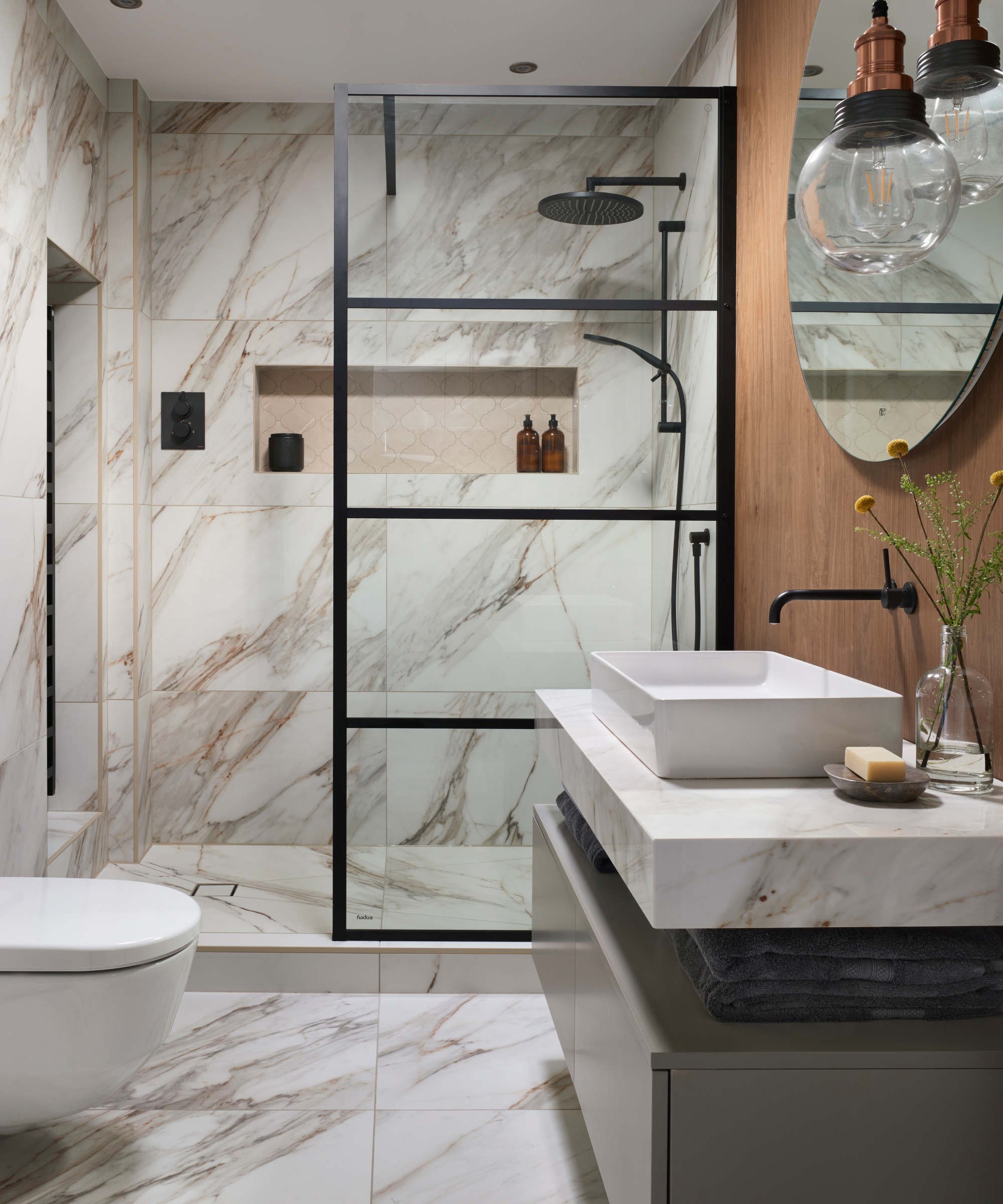
Picking your bath
Although the standard bath size is 1700mm x 700mm, there are bigger and smaller sized baths available. You will also need to decide on the style of bath you prefer.
"However, whichever bath you decide to go for, remember to add an extra 100mm to length and width dimensions if it is going into a smaller gap," says Barry. "This gap means it is easier to maintain and clean the outside of your bath."
Freestanding baths
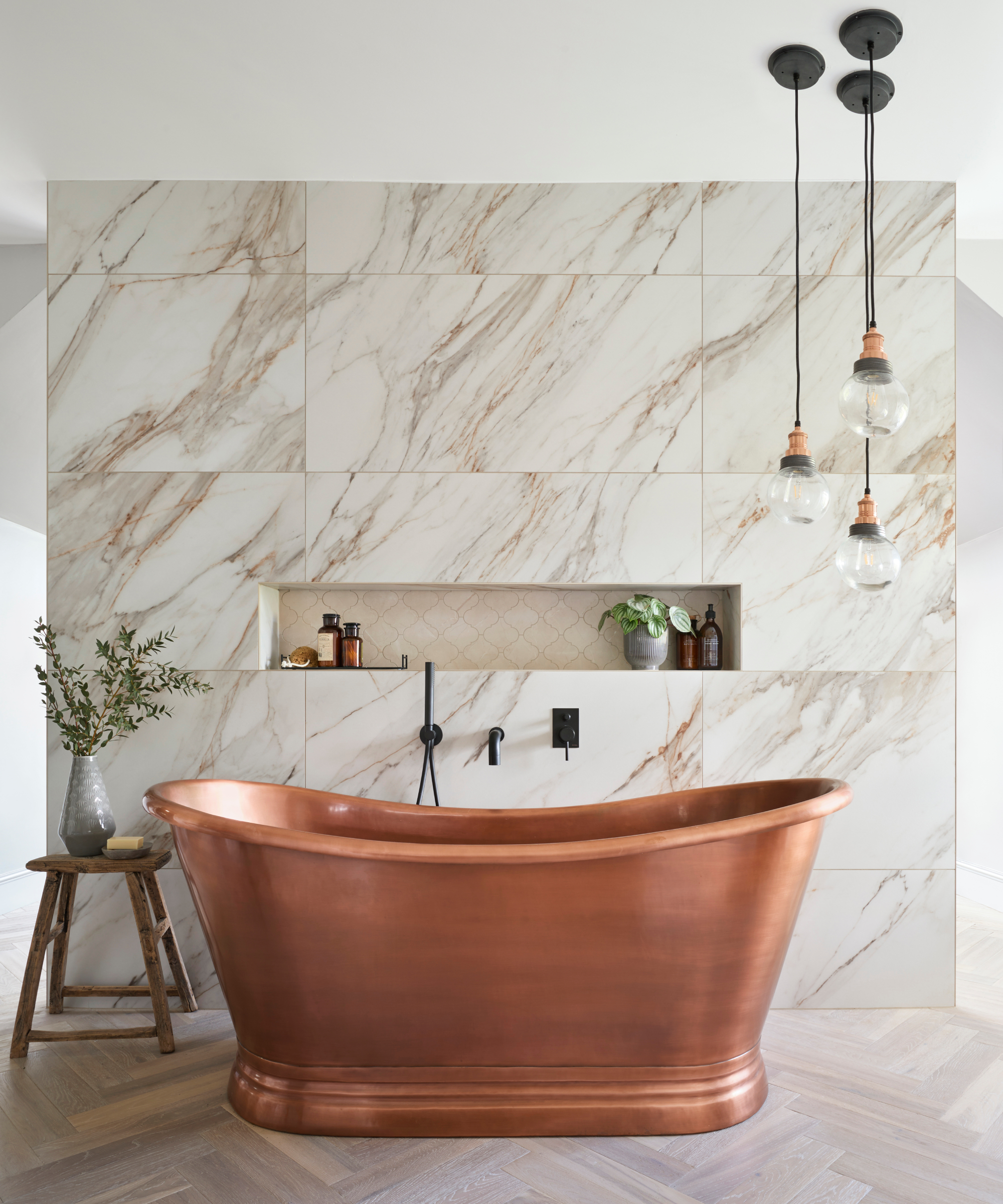
Just like it says on the tin, freestanding baths are freestanding; they aren’t connected to walls or any other surface apart from the floor. They can be modern or period in design, either sat flush to the floor or with feet which can include clawfoot or bun feet.
"Although freestanding baths generally needed larger bathrooms to accommodate them, in recent years, there have been several launched to the market with much smaller footprints (around 1350mm)," Barry tells us.
Good news for homeowners who don't want to forgo the stunning focal point these types of baths provide.
Back to wall baths
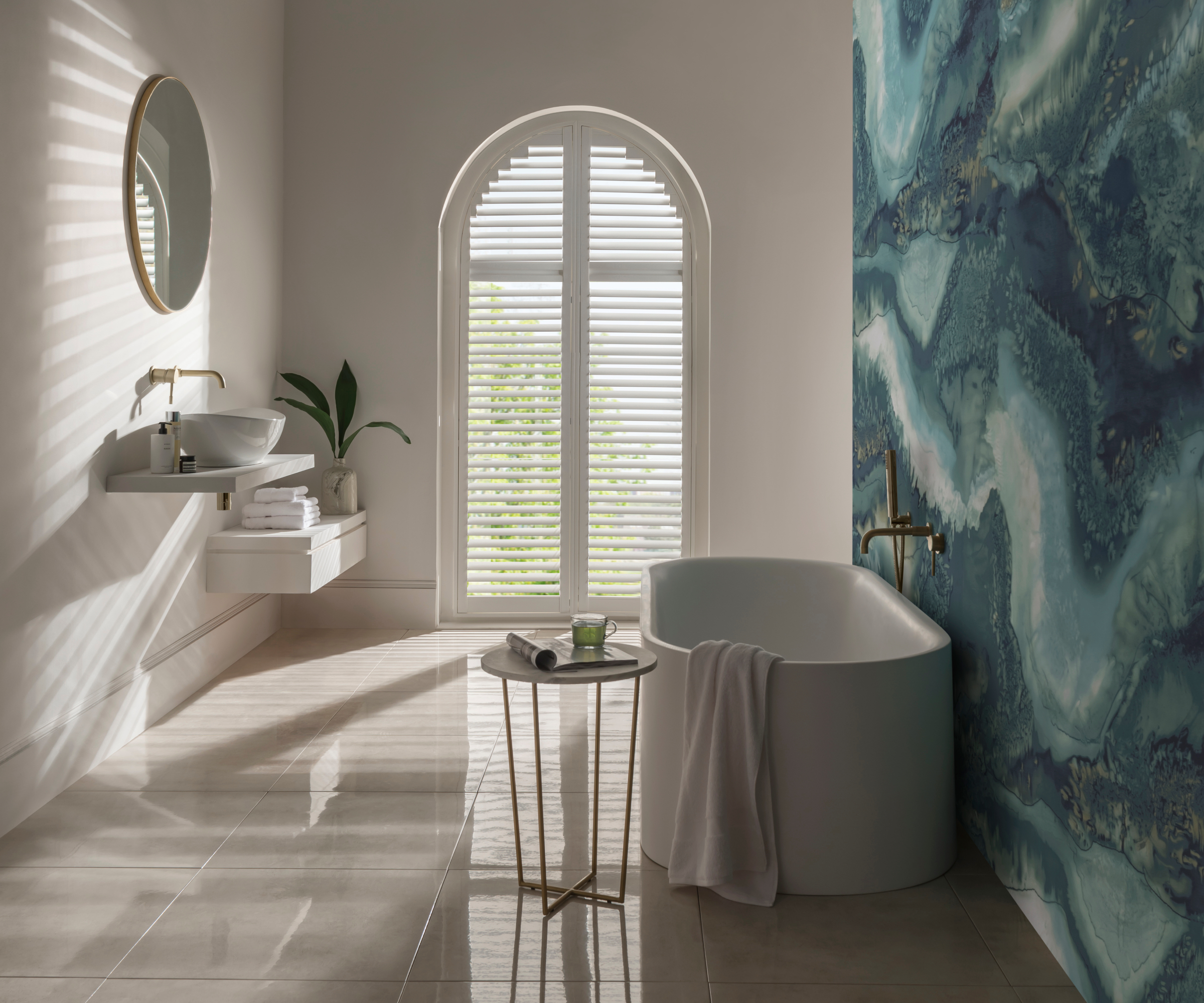
Back-to-wall baths have one of the long sides fitted to wall allow for a convenient range of location options.
"They can be advantageous in your bathroom design if you're limited by space or want to keep your bath to one side," says Barry. "This style also offers flexibility with tap choices. Deck-mounted, floor standing or wall-mounted are all potential options, letting you pick which ones work best for you and your family."
Fitted baths
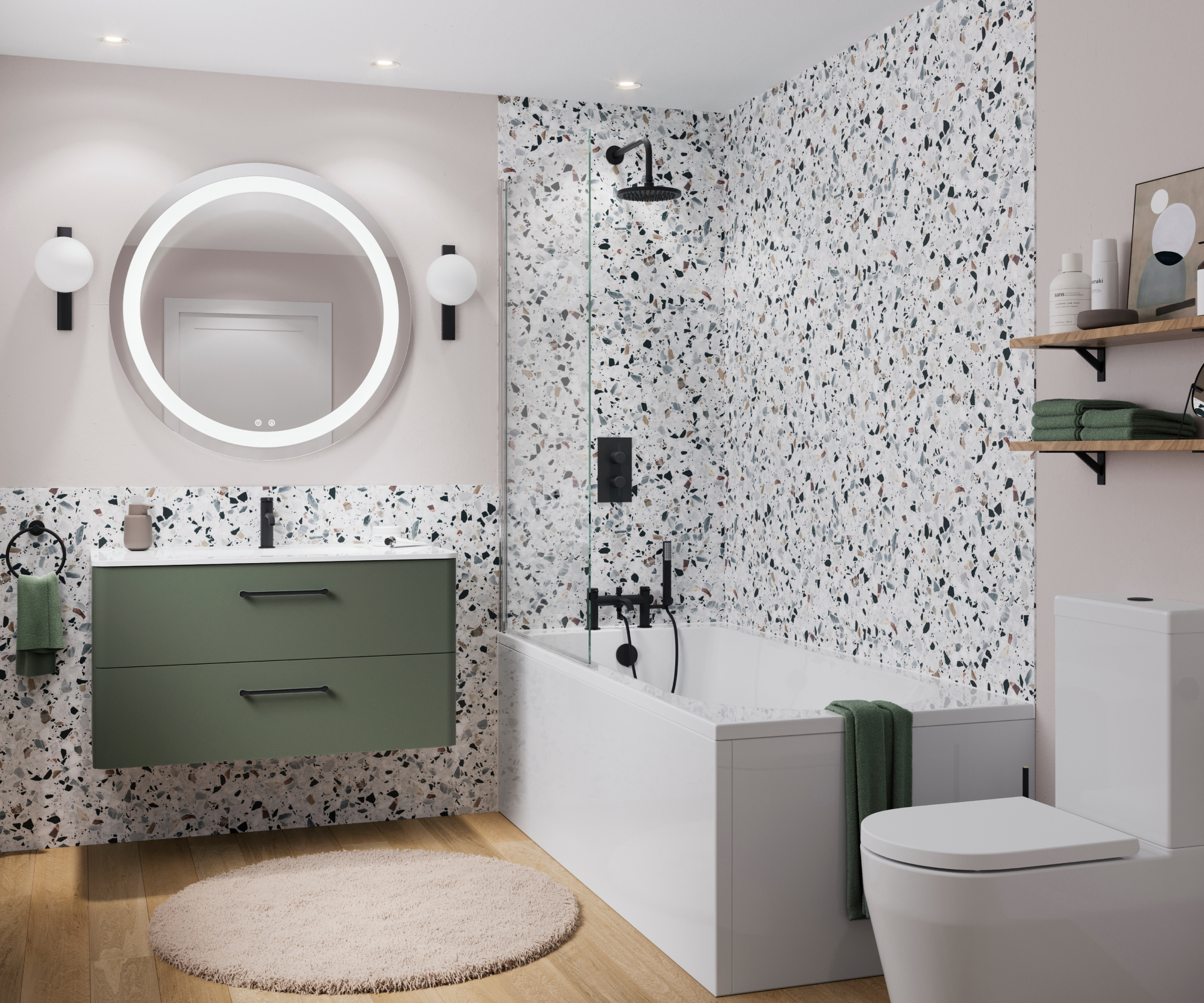
One of the most popular styles of baths, these are fitted into place on either two or three walls.
"Choosing this style is often both a cost-effective solution to having a bath but also a great way of saving space as there are many models that have an extra wide section to make standing and showering much easier," says Barry.
Often referred to as P-shaped baths these can be a great addition to a small bathroom.
Bathroom basins - bigger is better
Your bathroom sink will be one of the most used items in your bathroom design so it's important not to skimp on the size of your basin. In a busy home, adding two is also a good solution - particularly in a family bathroom where one sink may have to accommodate more than one pair of hands at any given time.
Wall-mounted basins, or semi-pedestal designs, can give the illusion of more floor space and also allow the basin to be set at a height that works well for you and your family. Full-pedestal basins tend to be cheaper and give a more traditional look.
If bathroom storage ideas are top of your wish list, you'll also need to decide if you want one that sits on the countertop or is recessed inside. Perhaps you prefer a more moulded finish or are keen to incorporate a more vintage style bathroom idea into your design that involves upcycling a cupboard into a vanity unit.
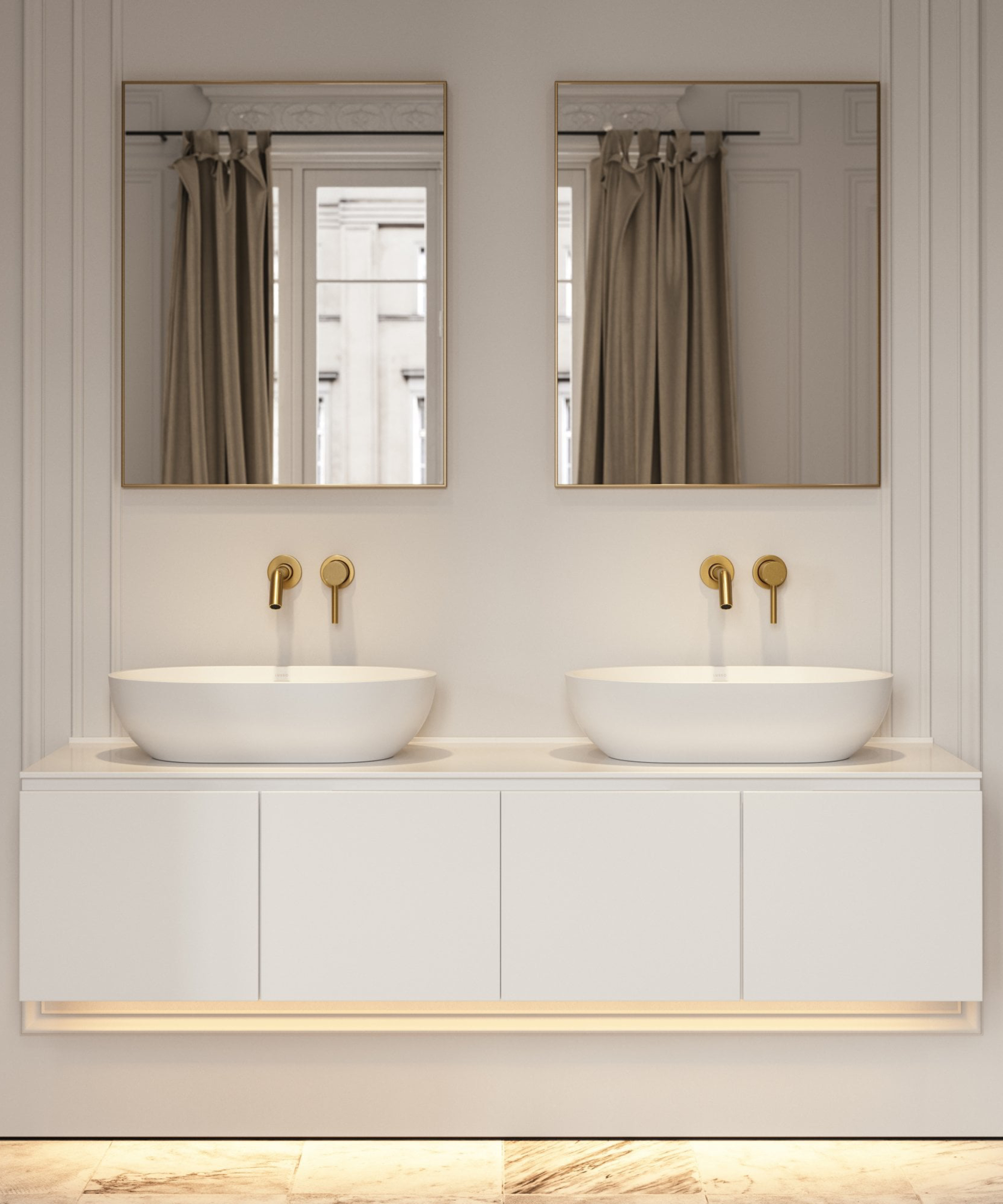
Bathroom flooring options
There are several questions to ask yourself when looking at bathroom flooring ideas. Is my choice water resistant, easy to clean and maintain, will it be warm underfoot and is it non-slip?
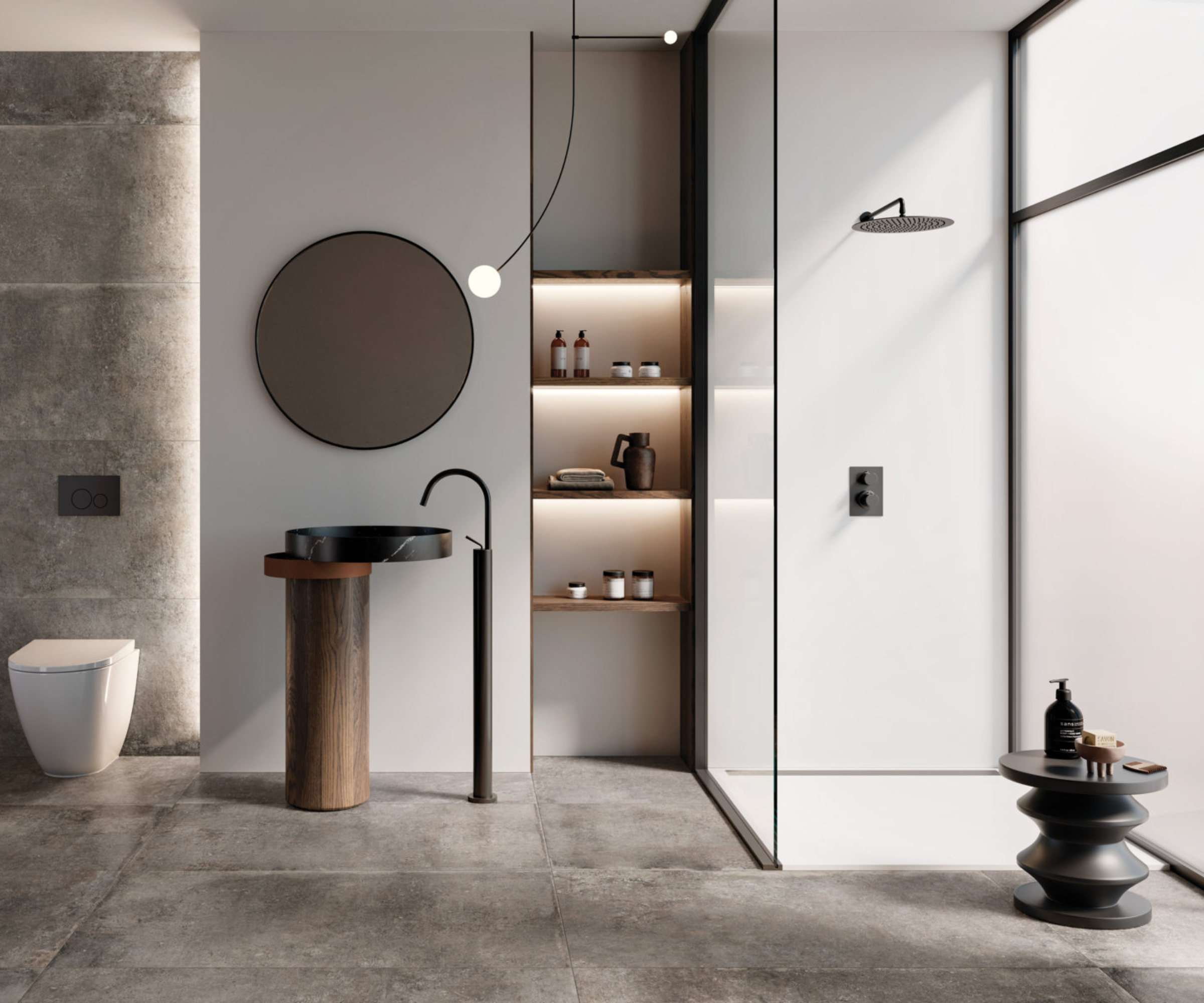
Good bathroom flooring options include natural stone tiles, porcelain and ceramic, rubber flooring, vinyl and linoleum and even engineered timber providing it has been properly acclimatised.
Perhaps even more important that the final finish of the floor is the bathroom sub floor.
With projects that involve renovating a bathroom, you may find that the existing floor requires some preparation. Timber floor joists should be sound and capable of withstanding the weight of new sanitaryware, or heavy stone tiles.
This might mean the joists need to be reinforced with extra timber and noggins. Adding in extra noggins overcomes the potential for large format stone tiles to crack.
Using an anti-fracture or uncoupling matting underneath new floor tiles is a good idea if you are concerned about tiles cracking due to movement within the floor.
Uneven concrete floors can be remedied with a self-levelling compound.
Heating a bathroom
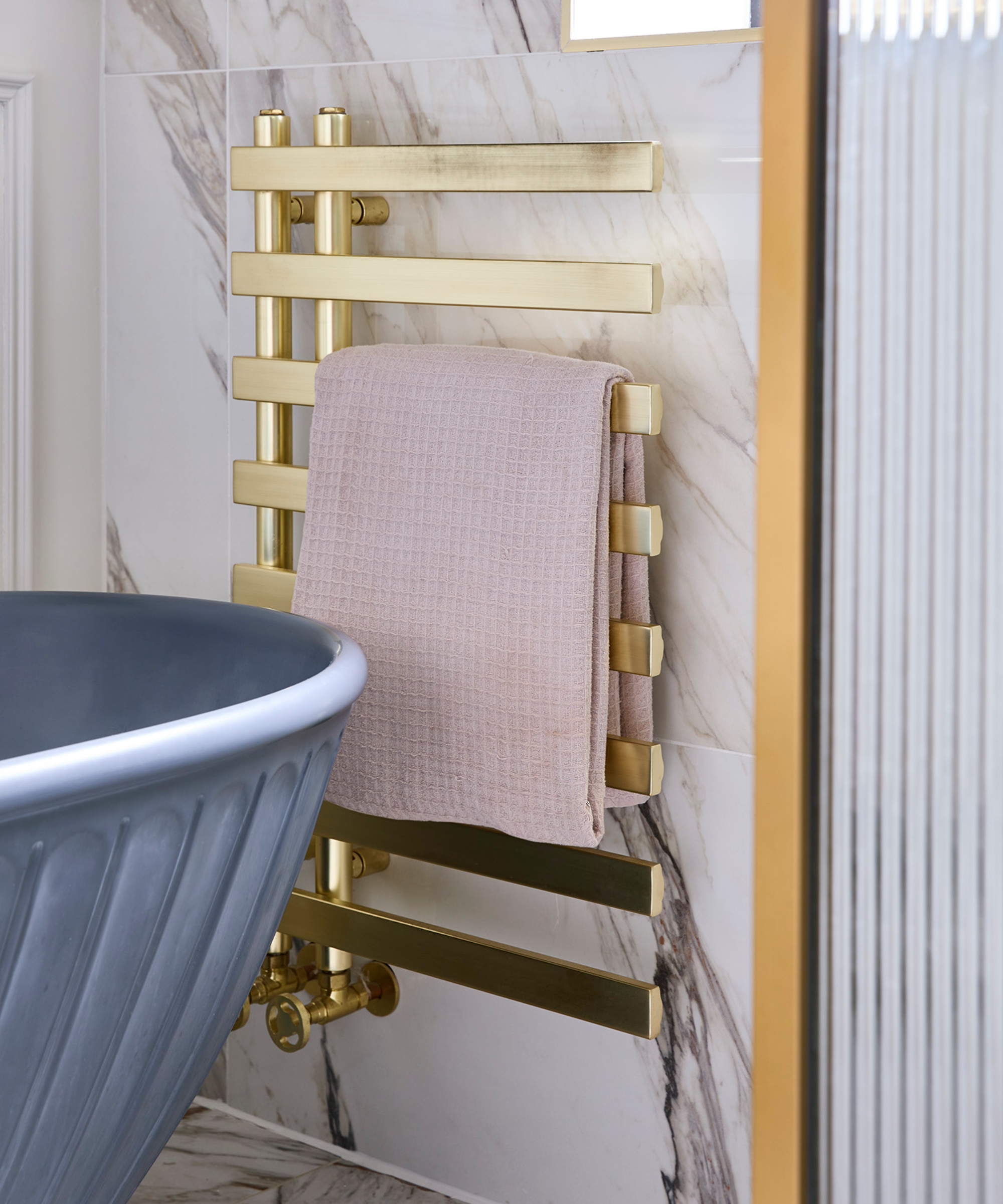
When considering your choices for heating a bathroom, radiators are an easy and cost-effective solution but when looking at the best bathroom radiators you will need to decide whether you want it to double up as a towel rail, or whether you will have a separate heated towel warmer.
This may also depend on how much heat you need to effectively warm the space. Working out what your space needs is covered in more detail in our article on what are BTUs.
A heated towel rail is a must if you want warm, dry towels - even in rooms with underfloor heating. It is wise to fit an electric, or dual fuel, towel rail that can be turned on even when your heating is off.
Underfloor heating is the perfect partner for hard, tiled floors - and is perfect in wet rooms and walk-in showers where it speeds up the drying out process of the floor.
Bathroom walls
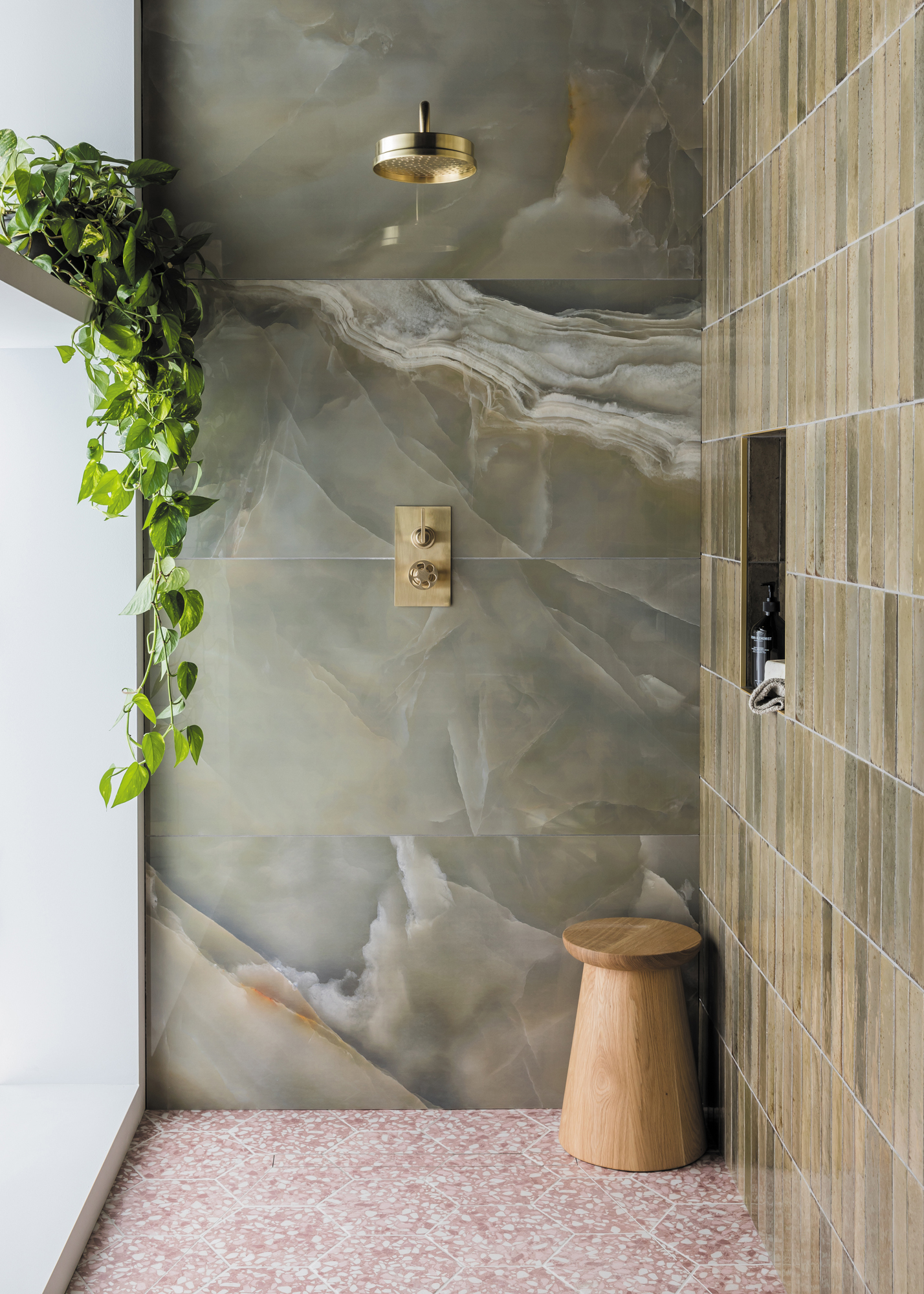
Are shower panels better than tiles?
Although tiles are the traditional – and still most popular – way of protecting the walls from water in a bathroom, there are not the only option.
If you do choose to tile the walls and are on a budget, consider tiling only the areas most exposed to water - such as the area around the shower and bath. There are also plenty of options when it comes to bathroom splashback ideas that could help add an additional feature to your overall design.
Shower panels, such as this Mosaic range from Mermaid Panels, are an increasingly sought-after method of protecting walls, being easy-to-clean and avoiding the need to find out the best ways for cleaning grout.
Shower panels can be made of PVC (at the cheaper end of the market), acrylic or pressure-laminated vinyl on an MDF core. They can be fitted over a number of different substrates.
Another popular alternative to tiles is to fix glass or perspex panels over a painted or wallpapered wall.
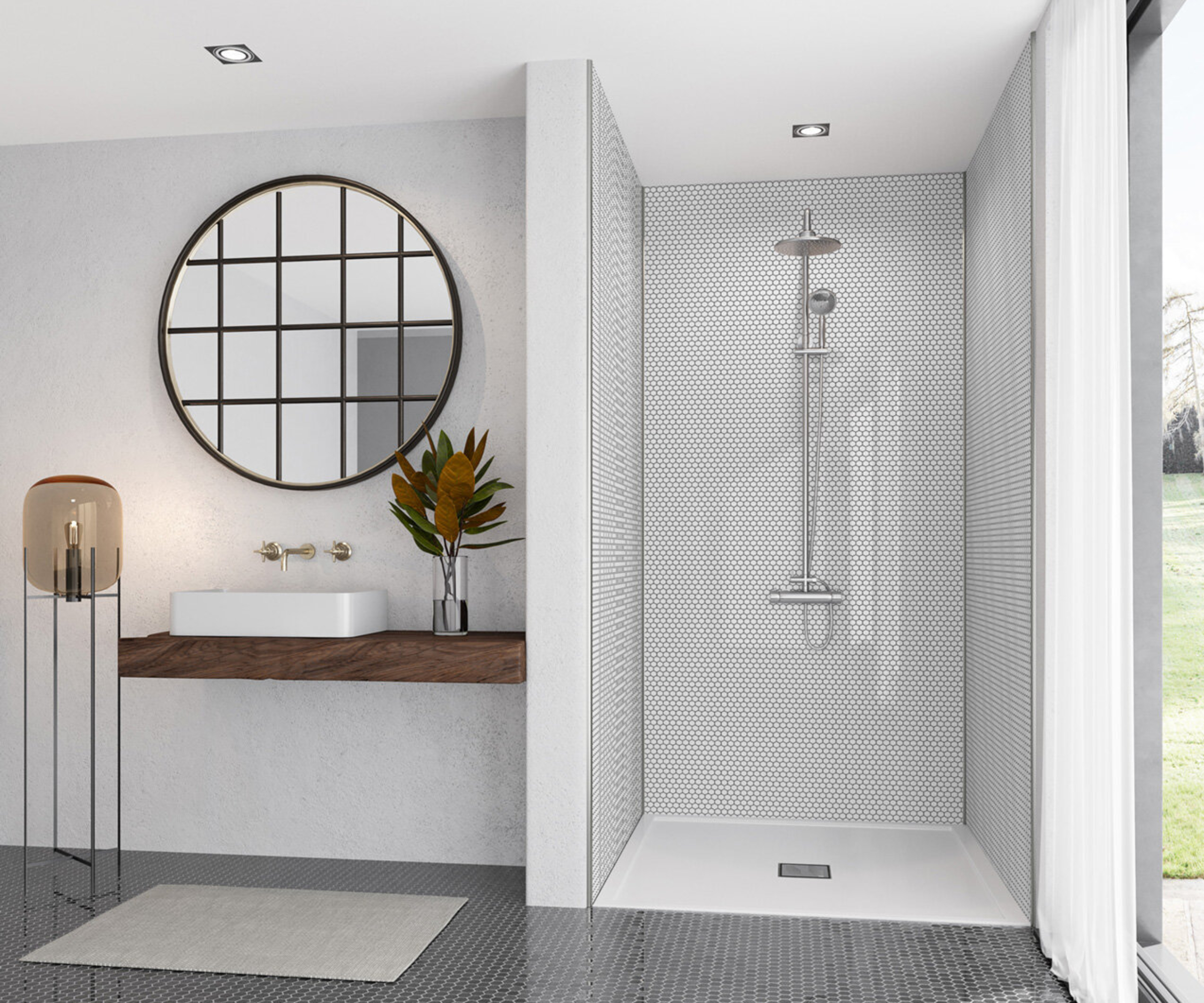
Bathroom paint and wallpaper options
When decorating a bathroom it's essential to choose a specialised paint product. The best bathroom paint should allow for breathable walls, preventing moisture from the air becoming trapped and inhibiting the growth of mould and damp in the walls.
Calming, natural colours work particularly well in the bathroom. From green bathroom ideas through to water-reminiscent blues, the right choice of colour will help foster a relaxing feel in your space.
Surprisingly, wallpaper can also be an effective choice in a bathroom and could be a good option for bolder bathroom trends. however, think carefully about the location. Keep away from splash zones such as around the basin or bath, especially if you have children. Using half wall tiling or panelling is an effective way to use wallpaper, without the risk of water damage.
Wallpaper will endure better with adequate bathroom ventilation, however, new waterproof wallpaper and mural systems are available which are tough enough to even withstand being located within shower enclosures.
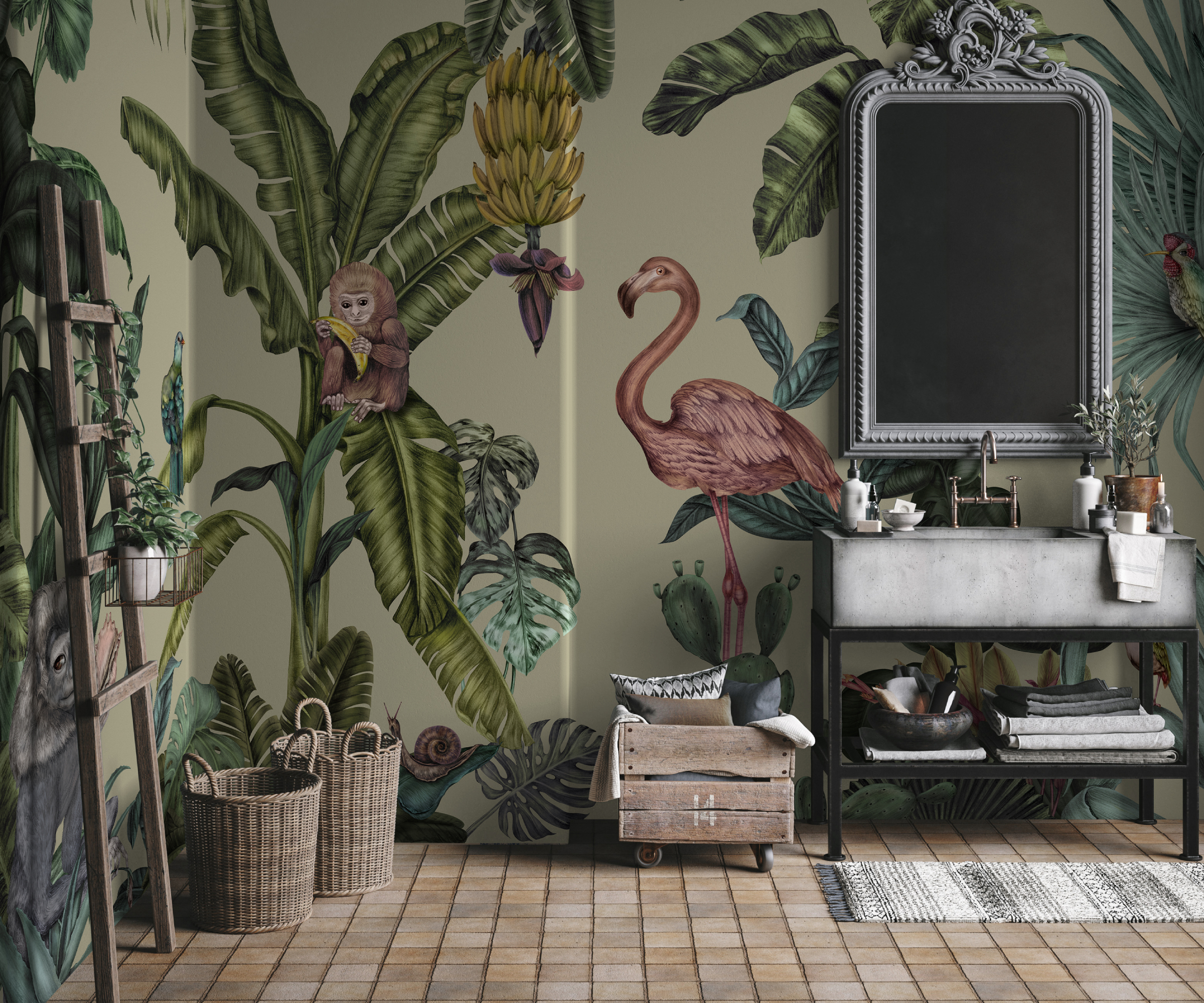
Bathroom lighting
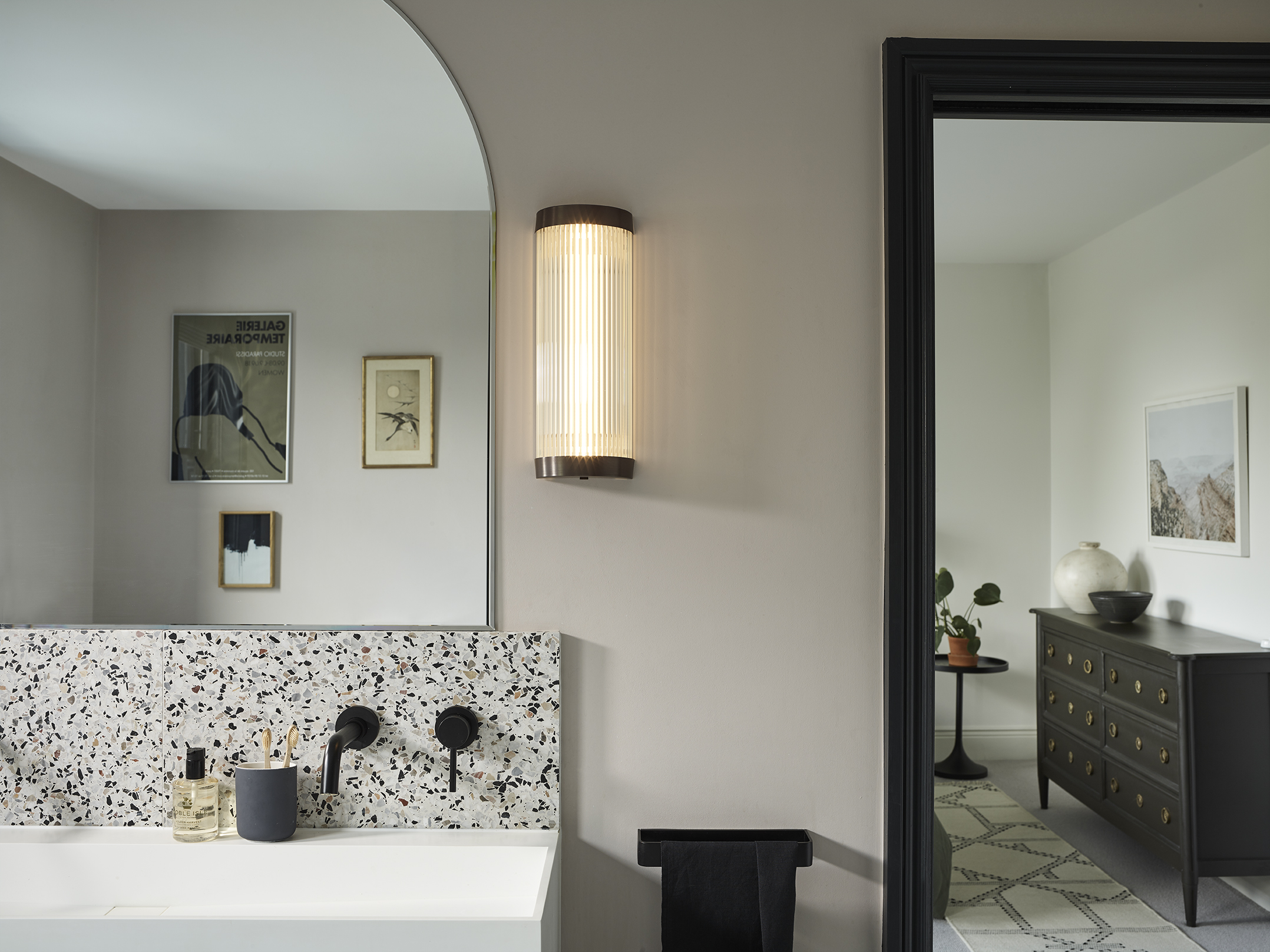
Once you know the layout of the bathroom, you can plan your bathroom lighting ideas, taking into account any features you want to highlight, as well as how much natural light enters the room.
A combination of downlighters (for general background lighting), task lighting (above mirrors, for example) and accent lighting (such as spots directed at features of note) works well. You might also consider some feature lighting set into the floor around the bath.
When it comes to Building Regulations, the bathroom is split into zones and the Ingress Protection (IP) rating of the lighting you choose should reflect the zone that it will be used in.
Zone 0, for example, is the closed to a water source, such as within a shower enclosure.
FAQS
Do I need a bathroom designer?
Although it's entirely possible to design your bathroom yourself, it's important not to underestimate the value of speaking to a professional who lives and breathes bathrooms every day.
“A bathroom retailer can be worth their weight in gold as they have a wealth of knowledge on how to make elements work together, as well as maximise the layout to its full potential," advises Barrie.
From knowing the latest products to making suggestions for bathroom colour ideas you may not have considered, visiting a showroom will undoubtedly provide you with more ideas than you started out with.
Can I fit my own bathroom?
Many people choose to fit their bathrooms on a DIY basis. Jobs that are easy to undertake without the help of the professionals include removal of the old sanitaryware and tiles. Decorating jobs such as painting and tiling are also popular DIY jobs and doing these tasks yourself will save on your bathroom costs.
Certain aspects of plumbing and electrical work will need to be carried out by a professional, whilst other jobs can be done by a proficient DIYer. Some bathroom fitters are skilled in every aspect of bathroom installation including plumbing, electrics and tiling.
As well as knowing how to design your bathroom, it's also good to avoid common bathroom design mistakes.
“One thing we always advise not to do," says Barrie, "is place the toilet in direct view of the door leading into the bathroom. This can often be the first thing people can see and you can make a much better impression with a beautifully designed vanity unit that showcases the design of the room and makes it much more than a purely functional space.
“A big issue we also see," he adds, "is people overspending. It is actually easy to do but is one of the major pitfalls when it comes to having a new bathroom. To ensure you don’t run dry, we recommend adding an extra 20 per cent to your budget as a contingency, just in case."
Get the Homebuilding & Renovating Newsletter
Bring your dream home to life with expert advice, how to guides and design inspiration. Sign up for our newsletter and get two free tickets to a Homebuilding & Renovating Show near you.
Natasha was Homebuilding & Renovating’s Associate Content Editor and was a member of the Homebuilding team for over two decades. In her role on Homebuilding & Renovating she imparted her knowledge on a wide range of renovation topics, from window condensation to renovating bathrooms, to removing walls and adding an extension. She continues to write for Homebuilding on these topics, and more. An experienced journalist and renovation expert, she also writes for a number of other homes titles, including Homes & Gardens and Ideal Homes. Over the years Natasha has renovated and carried out a side extension to a Victorian terrace. She is currently living in the rural Edwardian cottage she renovated and extended on a largely DIY basis, living on site for the duration of the project.
- Sarah HarleyAssistant Editor

